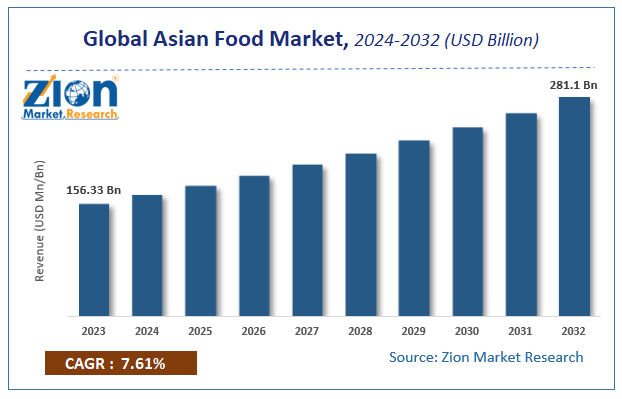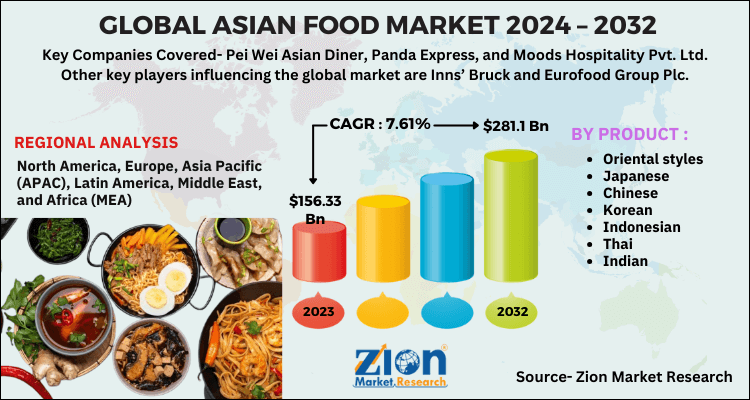Asian Food Insights: Exploring the Growing Trends and Market Potential
The Asian food market is one of the most dynamic and rapidly expanding segments within the global food industry. With its diverse and rich culinary heritage, Asian food has gained immense popularity worldwide. From traditional dishes to modern interpretations, Asian food offers an array of flavors that cater to every taste and preference. In this article, we’ll explore the latest trends, insights, and growth drivers shaping the Asian food market.
The Global Rise of Asian Cuisine
In recent years, the global demand for Asian food has skyrocketed. Whether it’s the spicy curries of India, fresh sushi from Japan, or vibrant street food from Thailand, consumers are increasingly seeking out the bold and complex flavors of Asia. According to market reports, the global Asian food market is expected to continue its growth, fueled by rising consumer interest in diverse, flavorful, and healthy food options.

Why is Asian Food So Popular?
Asian cuisine has a unique blend of flavors, textures, and ingredients that set it apart from other food types. Bold spices, fresh herbs, and high-quality ingredients make each dish stand out. Additionally, Asian dishes often prioritize balance, with a harmonious combination of sweet, salty, sour, and spicy elements. This balance of flavors is one of the key reasons why Asian food continues to attract a global audience.
-
Variety: With such a vast array of dishes, there’s always something new to try.
-
Healthy Options: Many Asian dishes focus on fresh vegetables, lean proteins, and healthy cooking methods.
-
Flavor Complexity: The diverse use of herbs, spices, and seasoning creates deep, rich flavors.
Growing Market for Asian Food
The Asian food market is not only growing in Asia but also seeing tremendous growth in North America, Europe, and other regions. Reports indicate that the global Asian food market size is expanding at a significant rate. The increasing adoption of Asian cuisine by millennials and Gen Z consumers is one of the primary drivers of this trend.

Key Trends in the Asian Food Industry
1. Rise of Fusion Dishes
Asian fusion cuisine has been gaining popularity in recent years. Chefs are experimenting with combining traditional Asian flavors with Western ingredients and cooking techniques. This fusion approach creates innovative dishes that cater to modern tastes while still maintaining the essence of Asian cuisine.
Examples of Fusion Dishes:
-
Korean Tacos: A combination of Korean bulgogi beef and traditional Mexican tortillas.
-
Sushi Burritos: A larger, burrito-style roll filled with sushi ingredients.
2. Health-Conscious Dining
Consumers are becoming more health-conscious and are seeking out food options that are both delicious and nutritious. As a result, Asian food offerings are increasingly emphasizing plant-based ingredients, low-calorie options, and gluten-free alternatives. Dishes like Vietnamese Pho, Japanese sushi, and Thai salads are often perceived as healthy and light.
-
Vegetarian and Vegan Options: The demand for plant-based alternatives is driving the creation of more vegetarian and vegan Asian dishes.
-
Low-Calorie Ingredients: Asian cuisine often uses fresh vegetables, lean meats, and minimal oil, making it an attractive option for health-conscious diners.
3. Street Food Revolution
Asian street food has made its mark on the global culinary scene. Whether it’s the famous Pad Thai from Thailand or the delicious bao buns from China, Asian street food offers unique, flavorful, and affordable meals. As food culture continues to evolve, street food-inspired menus are becoming more common at high-end restaurants and fast-casual eateries alike.

4. E-Commerce and Online Ordering
With the rise of digital platforms, ordering Asian food online has become easier than ever before. Delivery services such as UberEats, DoorDash, and others have made it convenient for consumers to enjoy their favorite Asian dishes from the comfort of their homes. The expansion of online ordering and the growing popularity of food delivery apps has significantly contributed to the increasing demand for Asian cuisine.
Popular Asian Cuisines to Watch Out For
While Asian food is incredibly diverse, certain cuisines have gained significant traction globally. Let’s take a closer look at some of the most popular and influential Asian cuisines today.
Chinese Cuisine: The Global Favorite
Chinese food is among the most popular and widely consumed cuisines worldwide. From dim sum to Peking duck, the diversity of Chinese dishes ensures that there’s something for every taste. The global popularity of Chinese food is fueled by its availability, affordability, and delicious flavors.
Popular Chinese Dishes:
-
Sweet and Sour Pork: A tangy, crispy dish that combines pork with a vibrant sauce.
-
Kung Pao Chicken: A spicy stir-fried chicken dish with peanuts and vegetables.
-
Dim Sum: Bite-sized dumplings, buns, and rolls, typically served with tea.
Japanese Cuisine: Fresh, Light, and Flavorful
Japanese cuisine is renowned for its focus on fresh ingredients and simple yet elegant preparation methods. Sushi, sashimi, and ramen have become staples in many countries outside of Japan. The delicate balance of flavors and the emphasis on presentation make Japanese food a favorite choice for discerning diners.
Popular Japanese Dishes:
-
Sushi: Vinegared rice paired with fresh fish, vegetables, or seaweed.
-
Ramen: Noodles served in a rich, savory broth with various toppings.
-
Tempura: Lightly battered and fried seafood or vegetables.
Indian Cuisine: A Rich Tapestry of Spices
Indian food is known for its rich, bold flavors and aromatic spices. Dishes like butter chicken, biryani, and samosas have garnered worldwide popularity for their depth of flavor. Indian cuisine is also one of the most diverse, with each region offering its own unique set of flavors and ingredients.
Popular Indian Dishes:
-
Butter Chicken: A creamy, spiced chicken curry.
-
Biryani: A fragrant rice dish with meat, vegetables, and spices.
-
Samosas: Savory pastries filled with spiced potatoes or meat.
Thai Cuisine: Sweet, Sour, and Spicy
Thai cuisine is a perfect blend of sweet, sour, salty, and spicy flavors. It’s known for its aromatic herbs and spices, such as lemongrass, basil, and kaffir lime leaves. Thai food has taken the world by storm, with dishes like Pad Thai, Green Curry, and Tom Yum Soup becoming household favorites.
Popular Thai Dishes:
-
Pad Thai: Stir-fried noodles with shrimp, chicken, or tofu.
-
Green Curry: A creamy, spicy curry made with coconut milk and vegetables.
-
Tom Yum Soup: A hot and sour soup with shrimp and mushrooms.
The Future of Asian Food: Innovations and Growth
As the demand for Asian food continues to rise, we can expect several innovations in the coming years. The integration of new cooking techniques, the rise of plant-based alternatives, and the use of advanced technology for food delivery will likely shape the future of the Asian food market.
Plant-Based Asian Cuisine
The plant-based movement is not only limited to Western cuisine but has also gained traction in Asian food culture. Asian dishes like tofu stir-fries, vegetable sushi, and vegan curries are becoming more widely available as consumers seek out healthier and more sustainable options.
Food Delivery and Automation
With the rise of automation in the food industry, delivery services are expected to become even more efficient. Automated kitchens, drone deliveries, and AI-powered ordering systems are likely to shape how Asian food is prepared and delivered in the future.
Frequently Asked Questions (FAQs)
1. What makes Asian food so unique?
Asian food stands out for its balance of flavors, use of fresh ingredients, and the emphasis on spices and herbs. The combination of these elements creates dishes that are both complex and delicious.
2. Is Asian food healthy?
Many Asian dishes are naturally low in fat, rich in vegetables, and high in protein, making them healthy options. However, some dishes may be high in calories due to frying or the use of creamy sauces, so it’s important to choose wisely.
3. How can I make my Asian takeaway healthier?
To make your Asian takeaway healthier, opt for dishes that are grilled or steamed rather than fried. You can also ask for less sauce or more vegetables to reduce calorie intake.
Conclusion
The Asian food market is flourishing, driven by consumer demand for diverse, bold, and healthy dining options. Whether it’s the rich flavors of Indian cuisine, the delicate elegance of Japanese food, or the spicy kick of Thai dishes, there’s an Asian dish for every craving. As the market continues to grow, we can expect even more innovation and fusion, making Asian cuisine an exciting area to watch.

The future of Asian food looks bright, with continued expansion and a growing appreciation for the rich culinary traditions of Asia.




